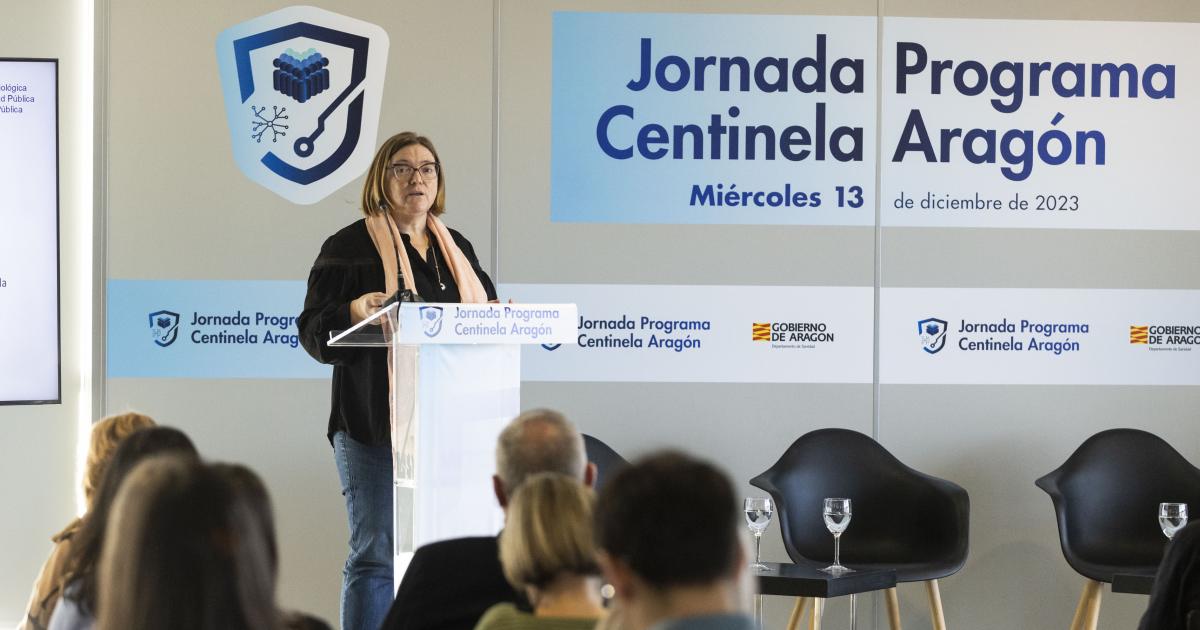They are our eyes, allowing us to see how and when influenza viruses begin to spread in communities… as well as other acute illnesses such as COVID-19 or respiratory syncytial virus.this Evolution every week This is reflected in the epidemiological bulletins and prompts the Ministry of Health to take appropriate measures to try to stop the spread of these diseases and to evaluate the effectiveness of preventive measures, especially vaccines.
The Sentinel Network, coordinated by the Epidemiological Surveillance Service of the Government of Aragon, is the system that monitors its incidence. The group was created in 2000 and consists of 39 primary care professionals from three provinces (Zaragoza 18, Huesca 10, Teruel 11), including 10 paediatricians and 29 family doctor.this Reference population Among the monitors conducted by the network, 41,584 people, representing 3.1% of the region’s inhabitants, are represented across age, gender, rural and urban areas. Coronavirus pandemic. It has been adapted for the post-Covid world, including monitoring other respiratory infections. Therefore, its scope has been expanded to the study of different respiratory diseases that coexist over time.
The situation is like this respiratory syncytial virus. For the first time this quarter, Aragon has used Sanofi and AstraZeneca’s monoclonal antibody nirsevimab in pediatric consultation and neonatal units to immunize infants under six months and under two years at high risk of severe disease to prevent the disease. virus. Their response has been overwhelmingly positive, with almost 100% of the target group receiving the jab, which is designed to prevent cases of bronchiolitis and pneumonia, thereby reducing the risk of hospital admission and serious illness. Professionals confirm that, in fact, its incidence has decreased in younger children.
However, this proportion is far from the proportion of minors registered in the new period. flu campaign. This is also the first vaccination season covering the age group of 6 to 59 months. According to the latest data from the Ministry of Health, the immunization coverage rate is 41.4%. A few days ago, Aragon expanded the possibility of vaccination to the entire population, without belonging to one of the groups previously recommended to receive the dose. As of a week ago, the overall coverage rate was 57.8%.
Aragonese community over Influenza epidemic thresholdCases for the quarter were 59.6 per 100,000 at the end of last year and have remained above that level for at least five weeks. So far, the curve plots its peak between January 8 and 14.
The Department of Health is likely to update the information on Tuesday this week, and an assessment can be carried out if the incidence rate falls again Repeal of the order of the ministry Mask wearing is mandatory in all health centres. Aragon will maintain the directive, according to which staff in health and social hygiene centers will be required to wear masks – at least until the incidence rate drops to 150 cases per 100,000 inhabitants – but patients will no longer be required to wear masks, even It’s in the hospital ward, on call.
Servetus Microbiology
The Servet Microbiology Laboratory also plays a key role in the surveillance of severe acute respiratory infections (Aragon registered a case rate of 20.5 per 100,000 people in the latest epidemiological bulletin).
Starting in 2021, in accordance with the instructions of the World Health Organization (WHO), the hospital’s Microbiology, Preventive Medicine and Public Health Services collect information on patients admitted through these procedures, conduct investigations and analyze samples. In this case, up to seven different viruses were studied. All these actions were developed in collaboration with the National Center for Microbiology.

“Influenza epidemics rise quickly and fall slowly”
Santiago Conde is a pediatrician in Barbarstro and has been part of this Sentinel network since 2015. He, like other professionals belonging to this system, Five patients with suspected respiratory infections were randomly selected in his office. Once they give their consent, respiratory samples are taken and sent to the laboratory at Miguel Servete Hospital, where they are given a survey “to further detail their symptoms.” “This allows us to know at any time which viruses are circulating within our quota,” he said. The information collected by doctors and pediatricians throughout Aragon allows us to understand quite accurately “how epidemics of influenza, respiratory syncytial virus or coronavirus spread throughout the community”, since it can be extrapolated to the entire territory.
Remember, before the coronavirus pandemic, they were solely focused on influenza. Other respiratory viruses are currently being monitored.besides control periodAccording to the DGA, this period is no longer from October to May, but year-round.
Nasopharyngeal samples collected from susceptible patients allow detection of different diseases by PCR: SARS-CoV-2, influenza A and B, and respiratory syncytial virus. He said the Sentinel network is one source of information for measuring risk. The evolution of respiratory pathologyand emergencies treated in primary care and hospitals, “which also reflect acute and severe respiratory infections.”
As the pediatrician assures, flu epidemics “rise very quickly and usually taper off over the next few weeks.” Actually, After peaking in the second week of JanuaryMedical professionals have observed fewer and fewer cases of these conditions, leading to weeks of tense consultations.

